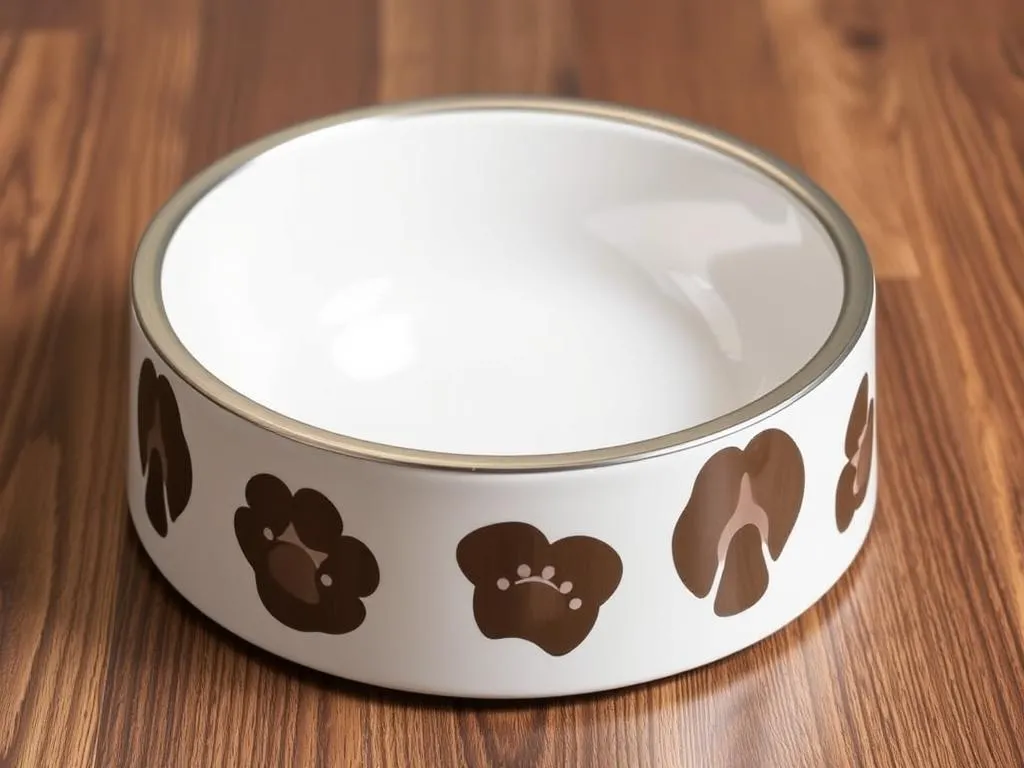
Introduction
Choosing the right dog bowl is an essential decision for every pet owner. Not only does it impact your dog’s feeding habits, but it can also affect their health and overall well-being. Among the myriad of options available, stainless steel and ceramic dog bowls stand out as two of the most popular materials. This article aims to compare stainless steel vs ceramic dog bowl, highlighting the benefits and drawbacks of each, while providing insights for pet owners looking to make the best choice for their furry companions.
The Importance of Choosing the Right Dog Bowl
Health and Safety Considerations
When selecting a dog bowl, health and safety should be top priorities. Certain materials can pose potential health risks, such as toxins leaching into food or harboring bacteria. It’s crucial to choose bowls made from non-toxic and safe materials to ensure your pet’s health. Stainless steel and ceramic are both generally considered safe options, but each has its specific nuances.
Dog Bowl Size and Design
Beyond material, the size and design of the bowl can significantly impact your dog’s feeding behavior. Different breeds have varying needs—larger breeds may require deeper bowls, while smaller breeds might prefer shallow ones. The design of the bowl can also influence how your dog eats, which is crucial for their digestion and comfort.
Overview of Materials
Stainless Steel
Stainless steel is a durable and rust-resistant material that is commonly used in pet products. Its non-porous surface makes it a safe choice for sanitary feeding, preventing bacteria buildup. Stainless steel bowls are often preferred by pet owners looking for longevity and ease of maintenance.
Ceramic
Ceramic bowls, on the other hand, are known for their aesthetic appeal. Available in a variety of colors and designs, they can easily complement home décor. While they are generally safe, some ceramic bowls may be coated with glazes that contain lead or other harmful materials, so it’s essential to choose high-quality, lead-free options.
Pros and Cons of Stainless Steel Dog Bowls
Advantages
- Durability and Resistance to Breakage: Stainless steel bowls are incredibly durable and can withstand rough handling, making them ideal for energetic dogs.
- Easy to Clean and Dishwasher Safe: Maintenance is a breeze, as these bowls can easily be cleaned in the dishwasher, ensuring a hygienic feeding environment.
- Non-Porous and Bacteria Resistant: The non-porous surface prevents bacteria from adhering to the bowl, making them a healthier option for your pet.
- Lightweight and Portable: Stainless steel bowls are generally lightweight, making them easy to transport for travel or outdoor activities.
Disadvantages
- Potential for Slipping on Smooth Surfaces: Stainless steel bowls may slide around on slippery floors, which could frustrate some dogs during feeding.
- Aesthetic Limitations in Design: While functional, the designs of stainless steel bowls can be less visually appealing compared to ceramic options.
- Possible Issues with Pet Allergies (Nickel Sensitivity): Some dogs may have sensitivities to nickel, a component in stainless steel, which could cause allergic reactions.
Pros and Cons of Ceramic Dog Bowls
Advantages
- Aesthetic Appeal and Variety of Designs: Ceramic bowls come in numerous styles, colors, and patterns, allowing pet owners to choose bowls that match their home’s aesthetic.
- Heaviness Prevents Sliding During Feeding: The weight of ceramic bowls makes them less likely to move around, providing a stable feeding environment for your dog.
- Can Be More Stable on Uneven Surfaces: The solid structure of ceramic bowls provides stability, even on uneven surfaces, reducing the risk of spills.
Disadvantages
- Fragility and Risk of Breaking: Ceramic bowls are prone to breaking if dropped, making them less ideal for clumsy pets or active households.
- Potential for Chipping and Harboring Bacteria: Chips in the ceramic can create crevices where bacteria may grow, posing a health risk if not properly maintained.
- Heavier Weight May Not Be Suitable for All Pet Owners: Some pet owners may find ceramic bowls cumbersome to handle, especially for larger sizes.
Factors to Consider When Choosing a Dog Bowl
Dog Size and Breed
The size of your dog will significantly influence your choice of bowl material. Larger breeds may benefit from the durability of stainless steel, while smaller breeds might enjoy the aesthetic charm of ceramic bowls. Always consider your dog’s size when selecting a bowl.
Feeding Habits
Understanding how your dog eats is crucial. Fast eaters may need bowls designed to slow them down, while slow eaters might prefer wider bowls. Both stainless steel and ceramic can offer options to address these unique feeding habits.
Dishwasher Safety and Cleaning
Maintenance is an essential factor in choosing a dog bowl. Stainless steel bowls are generally dishwasher safe, making cleaning easy. Ceramic bowls may require more careful handwashing, especially if they have intricate designs or are painted.
Allergies and Sensitivities
If your dog has allergies or sensitivities, it’s vital to consider the materials in their bowl. Some dogs may react negatively to metal, while others may be fine. Always observe your pet’s reactions and consult your veterinarian if unsure.
Aesthetic Preferences
While functionality is critical, many pet owners also want their dog bowl to fit their home decor. Ceramic bowls offer a wider variety of colors and designs, allowing for a balance between style and function.
Real-Life Testimonials and Experiences
Pet Owners’ Perspectives
Many dog owners have shared their experiences with both stainless steel vs ceramic dog bowls. For instance, one owner noted, “I love my stainless steel bowls; they’re so easy to clean, and I never worry about them breaking.” In contrast, another remarked, “I prefer ceramic bowls because they look so nice in my kitchen, and my dog doesn’t seem to mind the weight.”
Veterinarian Recommendations
Veterinarians often recommend stainless steel for its durability and ease of cleaning. “Bacteria can accumulate in scratches and chips, which is why I advise my clients to choose non-porous materials,” says Dr. Smith, a veterinarian. However, she also acknowledges the appeal of ceramic bowls for their aesthetic value, provided they are lead-free and maintained properly.
Price Comparison
Average Costs of Stainless Steel Bowls
Stainless steel dog bowls can range from $10 to $50, depending on the brand, size, and features. Higher-end options may include elevated bases or special designs tailored for specific needs.
Average Costs of Ceramic Bowls
Ceramic dog bowls typically range from $15 to $60, with decorative options often costing more. The price can vary significantly based on the artistry and craftsmanship involved.
Long-term Investment Considerations
While ceramic bowls may have a lower initial cost, consider their fragility and potential for needing replacements. Stainless steel bowls, while slightly more expensive upfront, often provide a better long-term investment due to their durability and resistance to wear and tear.
Conclusion
In the debate of stainless steel vs ceramic dog bowl, both materials have their own unique advantages and disadvantages. Ultimately, the choice comes down to your specific needs, your dog’s behavior, and your aesthetic preferences. By considering health, safety, and practicality, you can make an informed decision that benefits both you and your furry friend.
FAQs
Which is better for my dog, stainless steel or ceramic?
Both materials have their benefits. Stainless steel is more durable and easier to clean, while ceramic offers aesthetic variety. Your choice should depend on your dog’s habits and your personal preferences.
How often should I clean my dog’s bowl?
It’s recommended to clean your dog’s bowl daily to prevent bacteria buildup. If your dog is prone to spills or messes, consider washing it more frequently.
Are there any health risks associated with ceramic bowls?
Some ceramic bowls may contain glazes with harmful substances like lead. Always choose high-quality, lead-free options to minimize health risks.
Can I use both types of bowls for my dog?
Yes, many pet owners choose to use a combination of both. For example, you might use a stainless steel bowl for outdoor feeding and a ceramic bowl for indoor use.
What size dog bowl should I buy for my pet?
The size of the dog bowl should correspond with your dog’s size and feeding habits. Always choose a bowl that allows your dog to eat comfortably without straining their neck.









